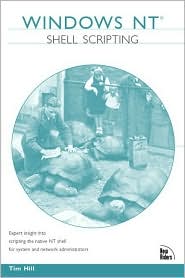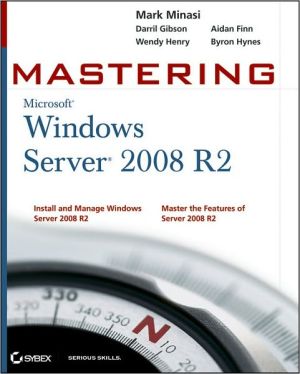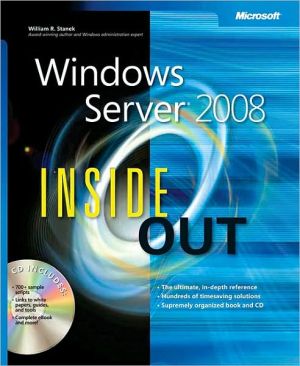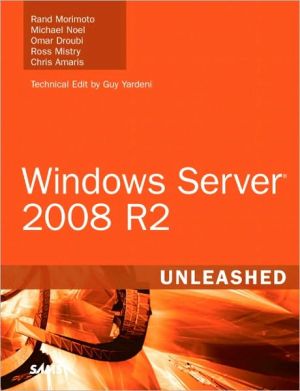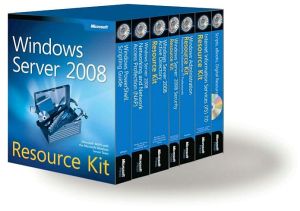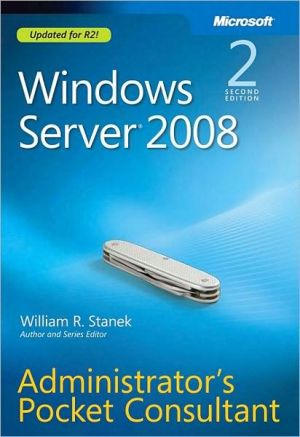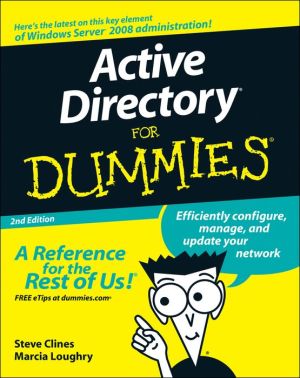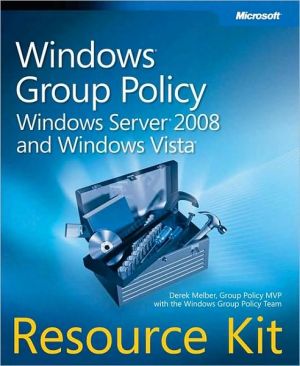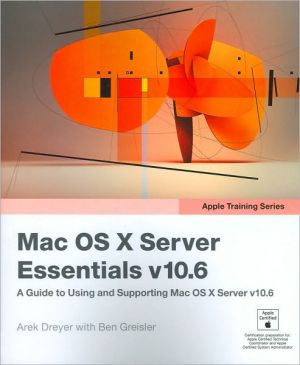Windows NT Shell Scripting
Windows NT Shell Scripting is a comprehensive reference for network professionals. It is the only book available on the practical use of the Windows NT shell scripting language. The book begins with a high-level introduction to the shell language itself, then describes the shell commands that are useful for controlling or managing different components of a network, i.e. file management, etc. The second part of the book is a comprehensive reference of all the commands, organized by function,...
Search in google:
Windows NT Shell Scripting is a comprehensive reference for network professionals. It is the only book available on the practical use of the Windows NT shell scripting language. The book begins with a high-level introduction to the shell language itself, then describes the shell commands that are useful for controlling or managing different components of a network, i.e. file management, etc. The second part of the book is a comprehensive reference of all the commands, organized by function, for easy reference by the reader.
\ From Part II: Real-World Scripting\ \ ...Description\ \ The REPL script provides a general-purpose file and directory replication facility for Windows NT. Unlike the Windows NT replication service, all replication directories managed by REPL are "peers." That is, there are no "master" and "slave" (or export/import) directories. Instead, REPL treats all directories as export and import directories.\ \ REPL manages sets of directories known as sites. A site is a set of one or more directory trees that are to be synchronized by the REPL facility. Sites are given arbitrary names to identify them, and REPL can support any number of sites, each containing any number of directories. Directories can be specified as local drive paths or UNC names. For example, a site named SAMPLE could contain the directories C:\\Source, E:\\Users\\Source and \\\\LIBRARY\\Archive\\Source. When REPL updates the SAMPLE site, all the directories are synchronized so that the contents of each tree are identical. The full directory trees are synchronized, including all sub-directories.\ \ Using UNC names for directories is recommended. REPL can perform replication runs with no user logged-in. In this case, networked drives may not be mapped as expected, and the replication can fail. Using UNC names avoids this problem, as the name is always valid, regardless of user logon state.\ \ REPL synchronizes the directories within a site by performing a round robin copy of files from one directory tree to the next. Thus, if a site contains three directories, A, B, and C, the REPL script copies directory A to B, then B to C, and then C back to A. In this way, a file placed inany of the directories A, B or C will eventually be propagated to all three directories (although it can take up to two replication passes to complete the copy).\ \ Actual directory replication is performed by ROBOCOPY command. Since this command only copies changed or new files, replication of directory trees is very efficient, and consumes a minimal amount of system bandwidth.\ \ Replication occurs when a replication "run" is initiated. Runs can be executed manually, using the /RUN switch, or automatically at predetermined intervals, using the /START switch. Once automatic replication is started, it continues while the Windows NT computer is running (it is not necessary for a user to be logged in). In addition, all replication information is persistent (it is stored in the system registry), and replication automatically restarts whenever the Windows NT computer is restarted. Automatic replication relies upon the Windows NT Schedule Service, and so this service must be running for replication to proceed.\ \ Use REPL(1) to display the status of the replication site named site-name. If site-name is absent, all replication sites are detailed. This command also displays the status of automatic replication (running or stopped).\ \ Use REPL(2) and REPL(3) to edit the contents of a site, or create a new site. The /DELALL switch deletes an entire replication site, the /ADD switch adds the specified dir to the site, and the /DELETE switch deletes the specified dir. Multiple /ADD and /DELETE commands can be specified on a single REPL command line.\ \ Use REPL(4) to enable or disable a site. Replication runs do not replicate disabled sites, but they can still be edited. New sites are always enabled by default.\ \ Use REPL(5) to reset the entire replication facility, and delete all sites. The run/stop state of automatic replication is not changed by this command.\ \ Use REPL(6) to start automatic replication, and REPL(7) to stop automatic replication. The /INTERVAL switch specifies the interval between replication runs (in minutes). The default is 60 minutes. The /FIRST switch specifies the interval to the first replication run after the facility is started. The default is one minute. Automatic replication uses the Scheduler Service on the local Windows NT computer, and so this must be running before automatic replication can be used. The /LOG switch specifies a log file. This file, if specified, accumulates the replication results (actually the report generated by the ROBOCOPY command).\ \ Use REPL(8) to perform a manual replication run. This is useful when testing a replication setup before starting automatic replication, or to perform an immediate update of all replicated information. As a result of the algorithm used, two REPL(8) commands should be issued to ensure that complete peer replication has occurred...
Introduction1Pt. IThe Script Language51The Basics of Scripts72The Windows NT Command Shell193Script Parameters and Variables654Control Flow, Procedures, and Script Nesting101Pt. IIReal-World Scripting1435A Scripting Toolkit1456User Management Scripts1777Miscellaneous Scripts205Pt. IIIScripting Command Reference239Command Reference241Alphabetical Listing of Commands247Appendixes355AThe RCMD Resource Kit Utility357BOther Useful Command Line Tools361Index363
\ From Barnes & Noble\ \ Fatbrain Review\ Finally, it's here, a superb book on NT shell scripting. Designed for system and network administrators who want to go beyond the NT GUI (graphical user interface), this complete reference covers Windows NT scripting language, including shell command syntax. For ease of use, the scripting commands are organized by functional group. All information is based on Windows NT 4.0 Service Pack3 and the Windows NT 4.0 Resource Kit supplement 2. The book covers the Windows NT command shell, script parameters, script variables, control flow and script nesting. It contains a complete set of ready-to-use scripting solutions. You can use them as is or modify them to suit your requirements. The book provides case studies to demonstrate how scripting solutions are being used to solve real-life problems.\ \
